Oil
- Oil clearly gains in response to the extension of voluntary cuts by the OPEC+ group for the second quarter of this year
- On the other hand, oil production in the USA reaches historical highs of over 13 million barrels per day
- The use of private refineries in China's Shandong region is declining to levels from 2022 when Shanghai was in lockdown
- Crude oil imports in the first two months in China were higher compared to the same period in the previous year but lower than at the end of last year. For January and February, there was a 5.1% year-on-year increase
- Demand from refineries in China is up 3% year-on-year for the first two months of the year, reaching record levels of 14.45 million barrels per day
- Strong data for the beginning of the year in China may indicate that demand this year could grow faster than the expectations presented by the EIA and IEA, and be closer to the expectations of OPEC
- The IEA raised its demand growth forecast by 110,000 barrels per day last week to 1.3 million barrels per day
- The IEA expects a continued deficit in the oil market this year, although previous forecasts indicated the market would enter surplus in the second half of the year. Forecasts assume the maintenance of voluntary OPEC+ cuts through the rest of the year
- Morgan Stanley indicates that in the third quarter of this year, Brent will average $90 per barrel. This is an increase from the forecast of $85 per barrel.
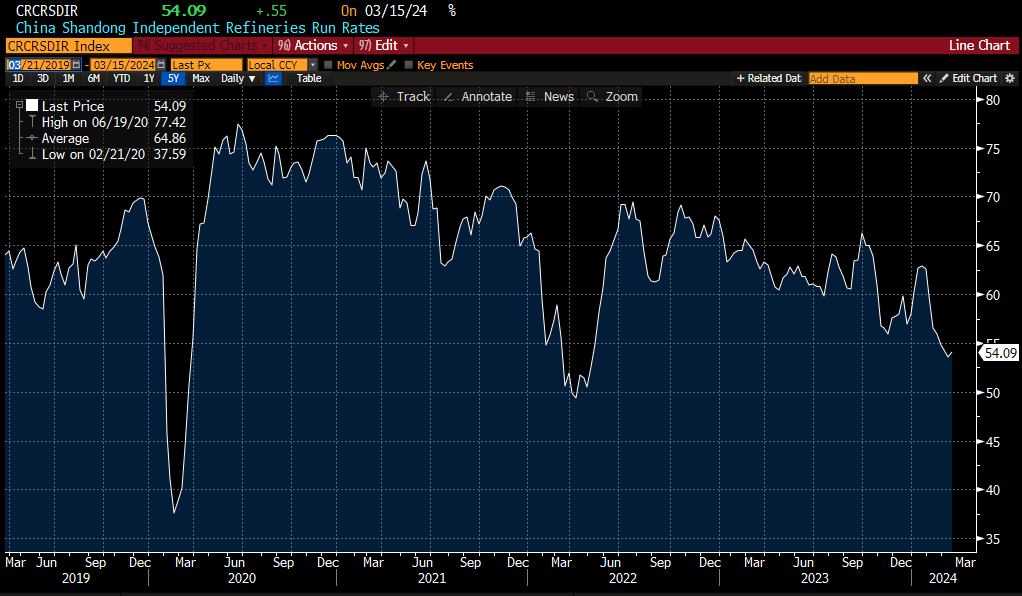
Demand in China is growing compared to 2023, but private refineries in Shandong are operating at just over 50% capacity, suggesting limited demand in the near term. Source: Bloomberg Finance LP
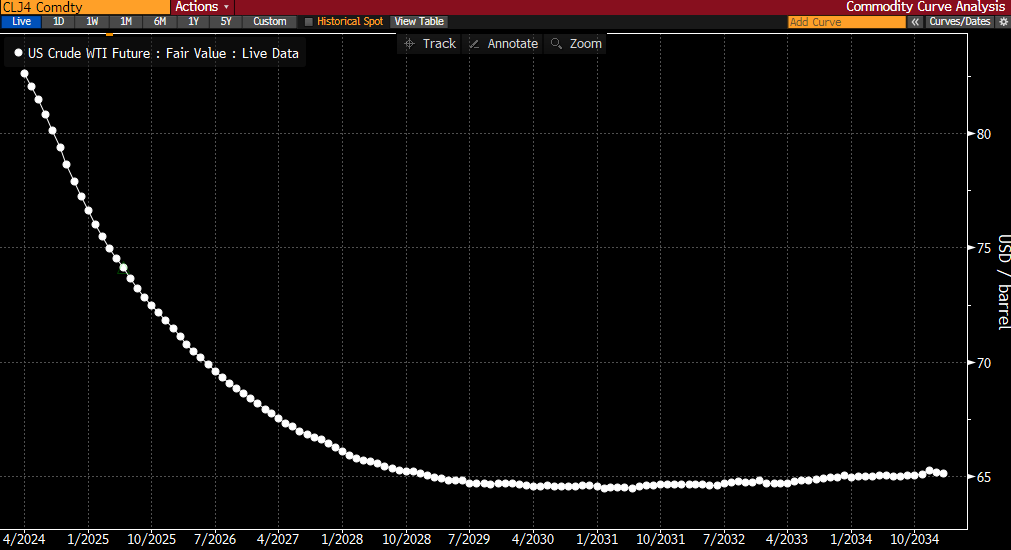
The oil futures curve indicates significant backwardation, indicating a likely significant deficit in the oil market, which is forecasted to persist at least until the end of this year. The question is whether Biden will be able to address the deficit globally before the end of the year. Will he opt for only local actions, such as encouraging further production increases or releasing already drained reserves? Source: Bloomberg Finance LP
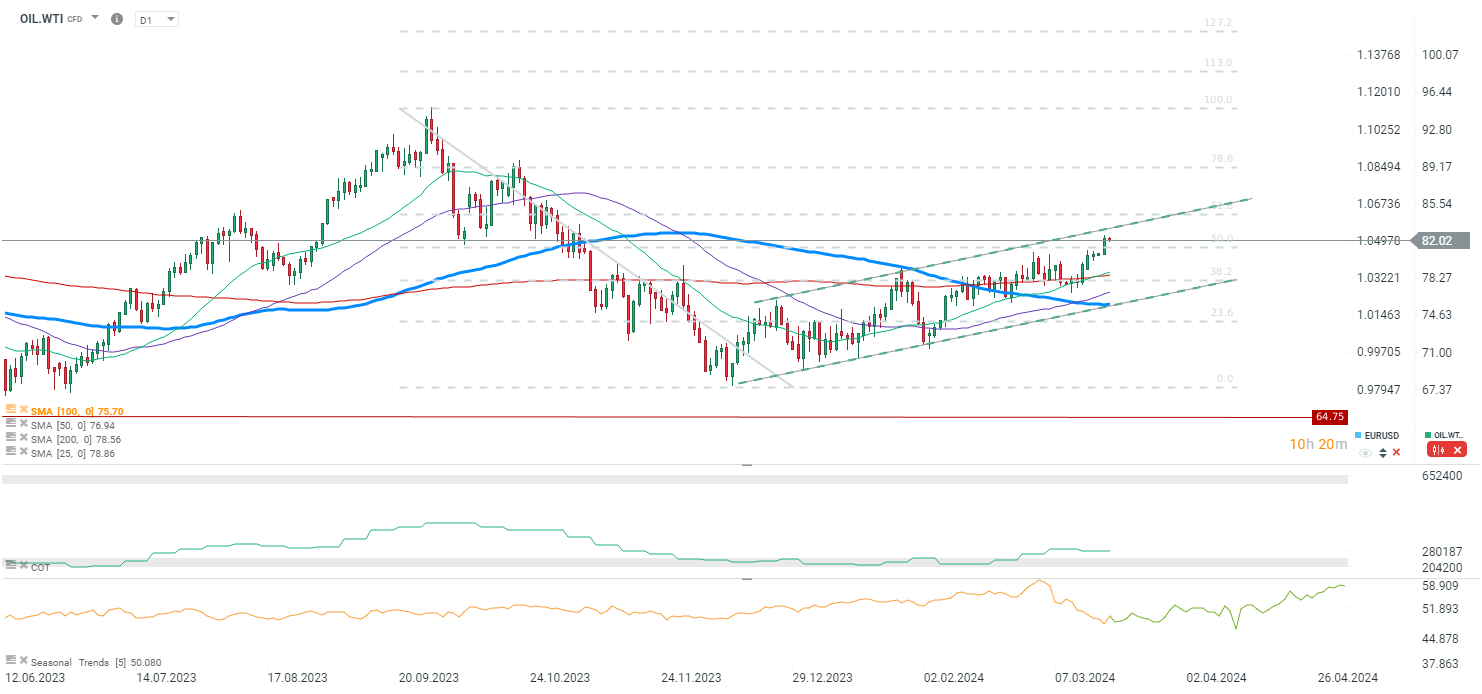
WTI crude oil continues its gains and is close to the upper boundary of the uptrend channel. It's worth noting that the 100-day moving average remains downward, so the potential for further increases may not have been exhausted yet. Source: xStation5
Natural Gas
- US natural gas (NATGAS) remains below the 14-day moving average (14 DMA)
- There has been a significant reduction in demand recently, although the recent weather change may lead to a slight extension of the heating season
- A key factor for a potential longer-term rebound in gas prices will be the production outlook
- The futures curve currently indicates significant contango in the coming months, which, however, may encourage the emergence of new short positions after rollouts
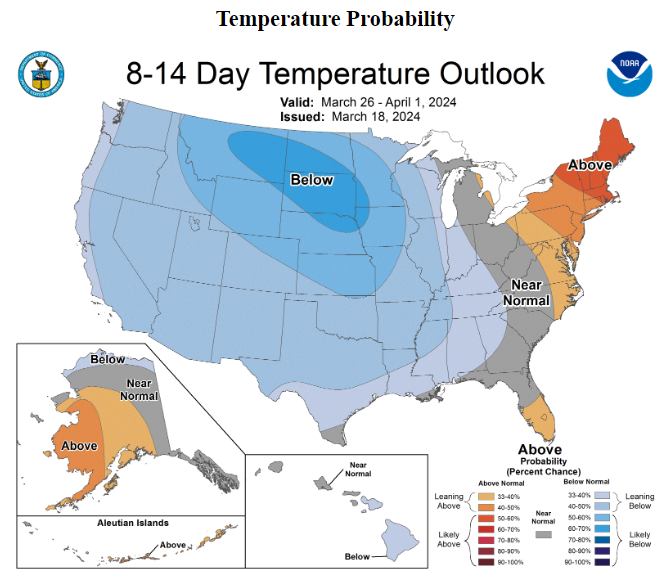
Weather forecasts in the USA have worsened; it's expected to be colder. Gas consumption is likely to increase, although the heating season itself is expected to end above 2000 billion cubic feet (bcf). Source: NOAA
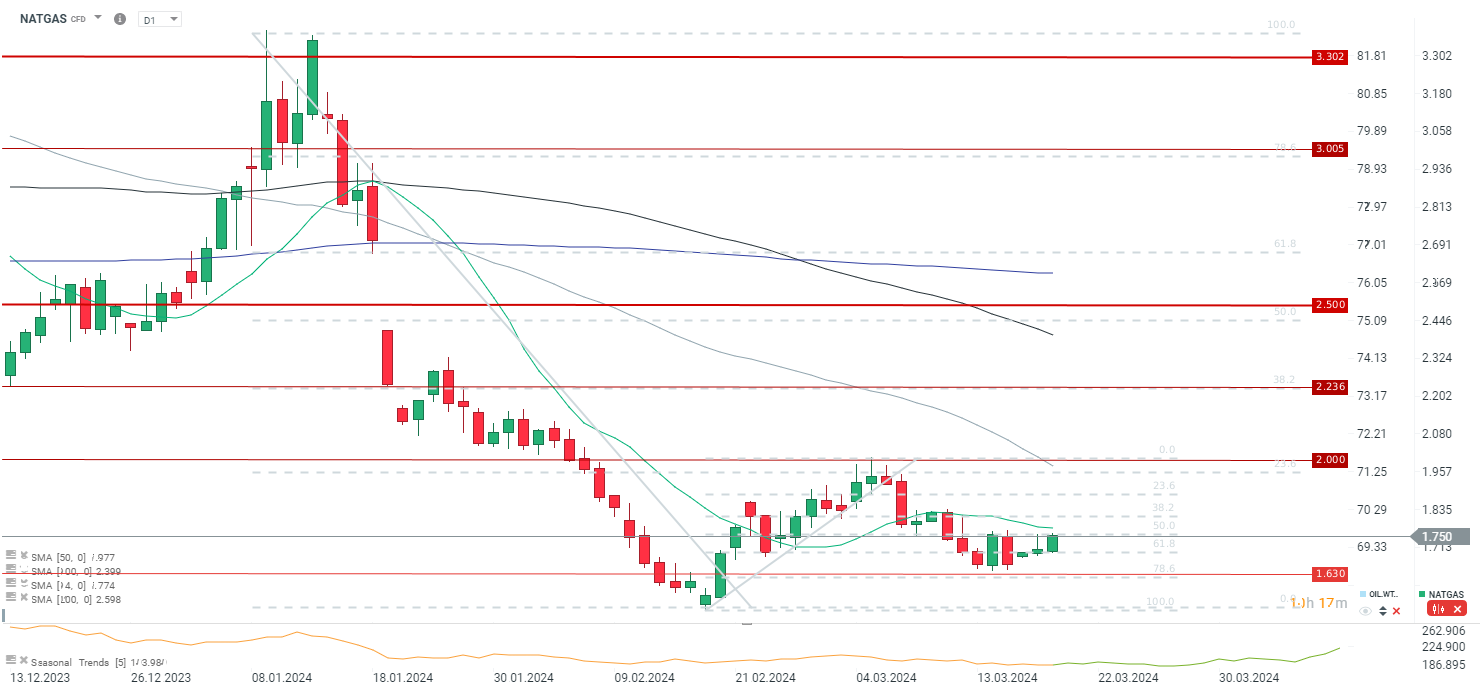
Natgas is preparing to test the 14 DMA, although the rollover itself should lead to an opening price around slightly below $1.9 per million British thermal units (MMBTU), based on current quotes. After the rollover, selling activity may intensify, and then the defense of the 14 DMA will determine the possibility of a return to the uptrend. Source: xStation5
Gold
- Gold is resisting the strengthening of the dollar, rising bond yields, and declines in the cryptocurrency market
- The correction in gold compared to historical peaks is minor, at just under 2%
- This could indicate significant concerns related to central bank decisions and the potential end of the largest carry trade associated with interest rate differentials between the USA and Japan
- However, if Wednesday's Fed decision sends a hawkish message related to the delay in rate hikes, gold may experience a more substantial correction
- On the other hand, we shouldn't expect a reduction in expectations for rate cuts from the Fed at this point. The Fed is likely still anticipating three interest rate cuts this year, which will remain a positive factor for gold in the longer term.
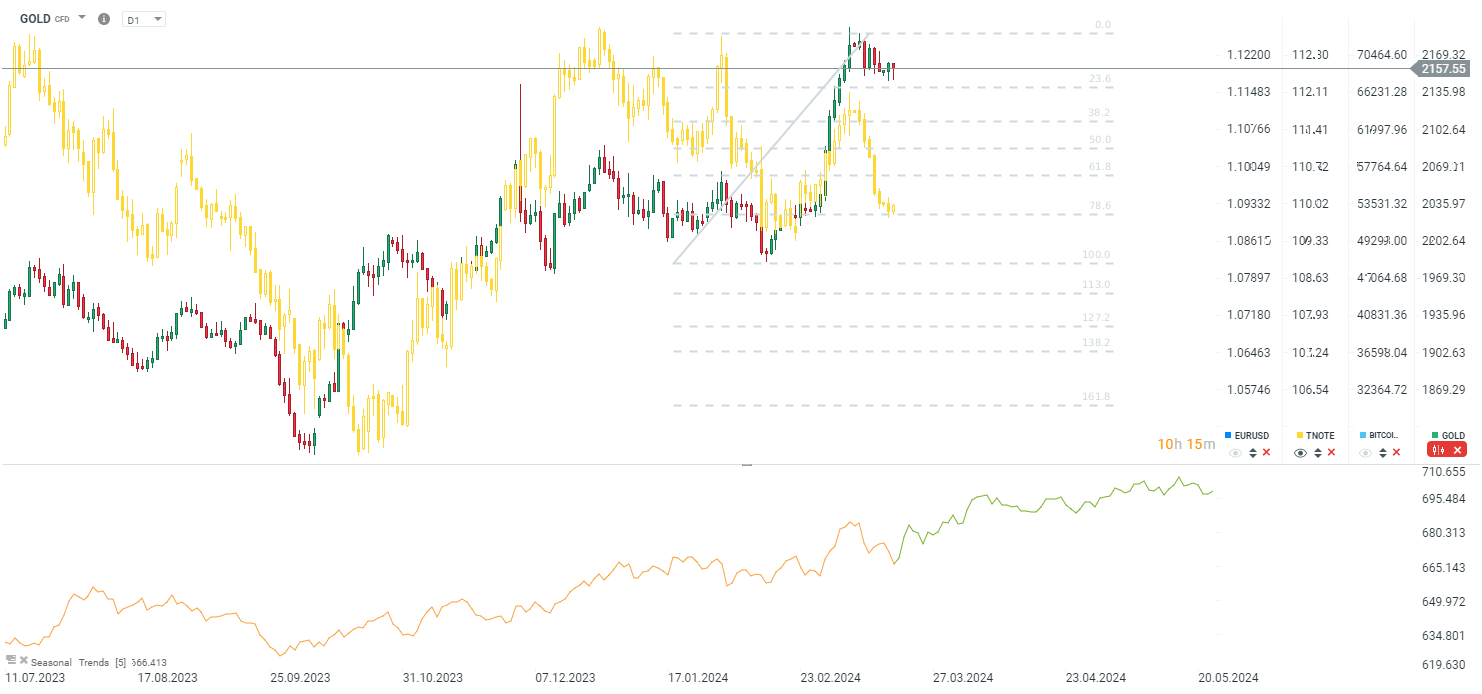
Gold is experiencing a slight correction from historical highs, even despite strong increases in yields in the USA. However, if the Fed issues a fairly hawkish statement during tomorrow's decision, this could result in a stronger correction. The key support level is around $2085 per ounce. Source: xStation5
Cocoa
- Cocoa surpasses the $8000 per ton level and reaches a fourfold standard deviation from the one-year average, showing the strongest deviation in history from the five-year average
- In the coming weeks, we will receive data on cocoa processing on different continents. If the high prices have led to a reduction in processing (which may also be related to lower availability), cocoa may experience a correction. On the other hand, until data emerges, the price could even reach $10,000 per ton
- Cocoa stocks continue to decline, although they are not yet significantly low. Stock levels remain relatively high compared to 2020 levels or the extremely low levels of 2004
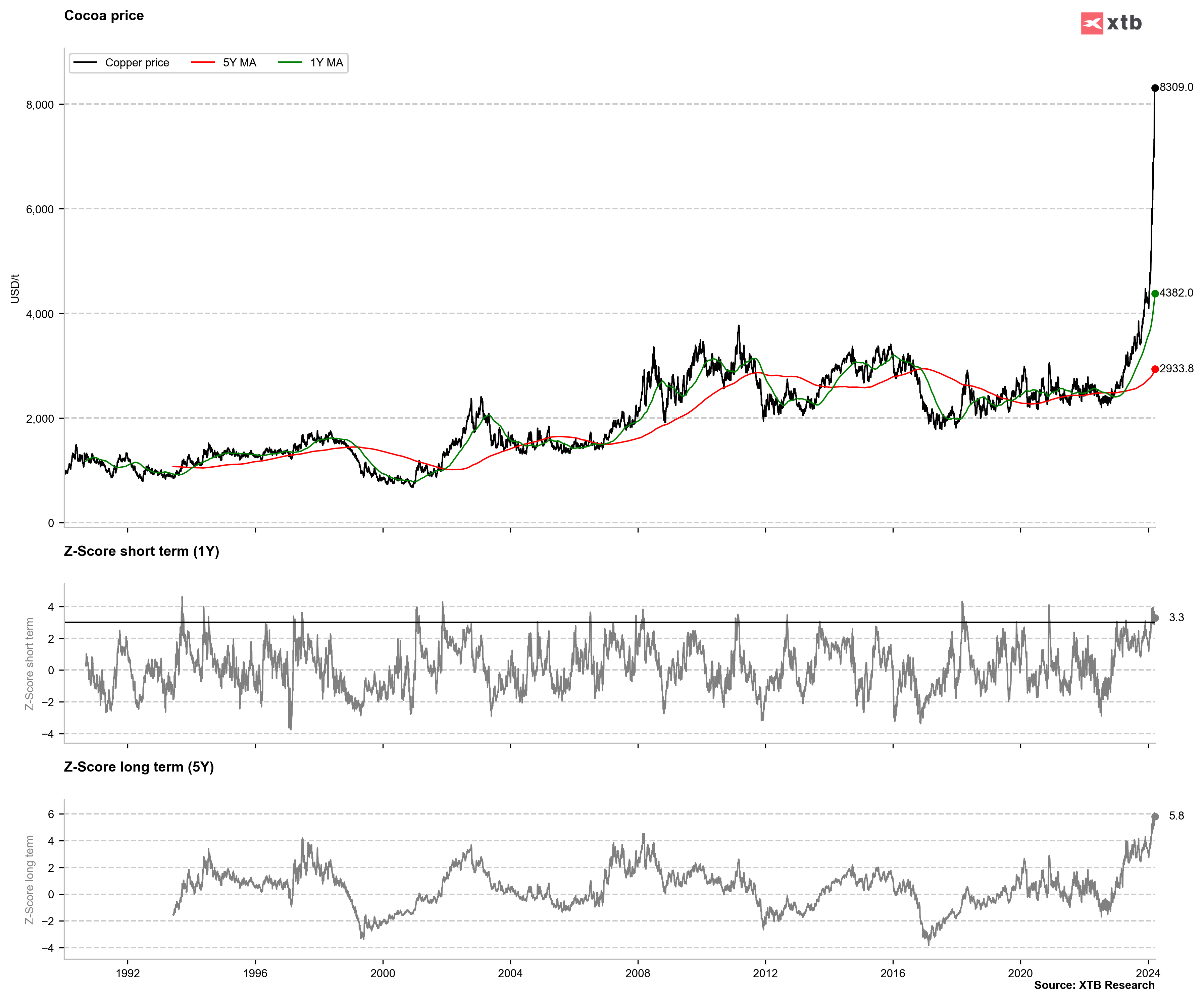
The price of cocoa rises above $8000 per ton. Currently, fundamentals support high prices, but a potential change in fundamentals may occur in April and May, when the so-called "mid-season" begins. This would provide the first concrete opportunity for a correction, although last year, mid-season data only fueled cocoa market increases. Source: Bloomberg Finance LP, XTB
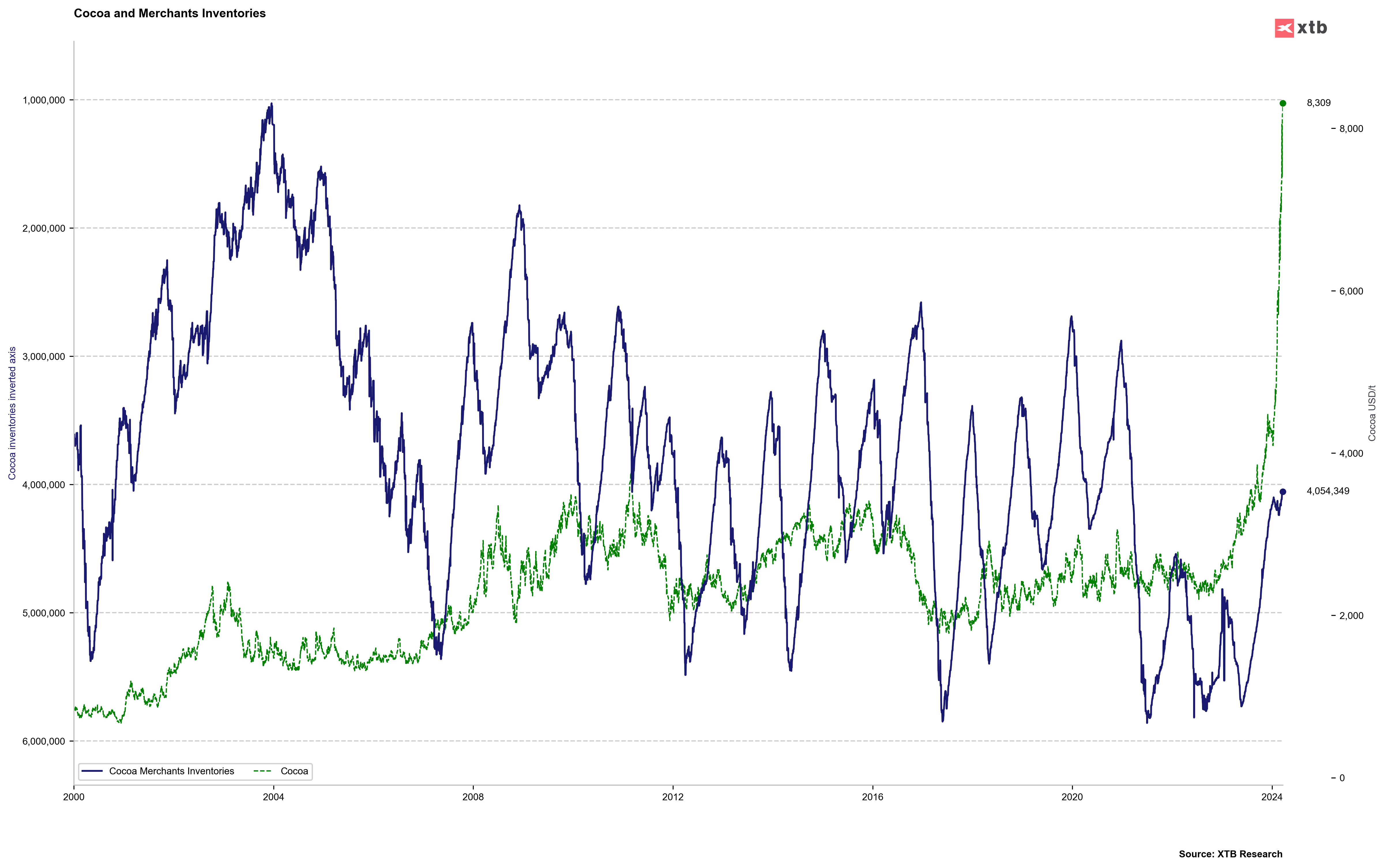
At the moment, there is no drastic decrease in stocks, which still remain significantly higher than in 2020 or compared to historically low levels in 2004. Source: Bloomberg Finance LP, XTB
Economic calendar: Key Macroeconomic Data from Europe and the US in Focus for Markets (05.11.2025)
Daily Summary - Global Sell-Off: Stocks and Crypto Down
Chart of the day - OIL (03.11.2025)
Morning wrap (31.10.2025)


